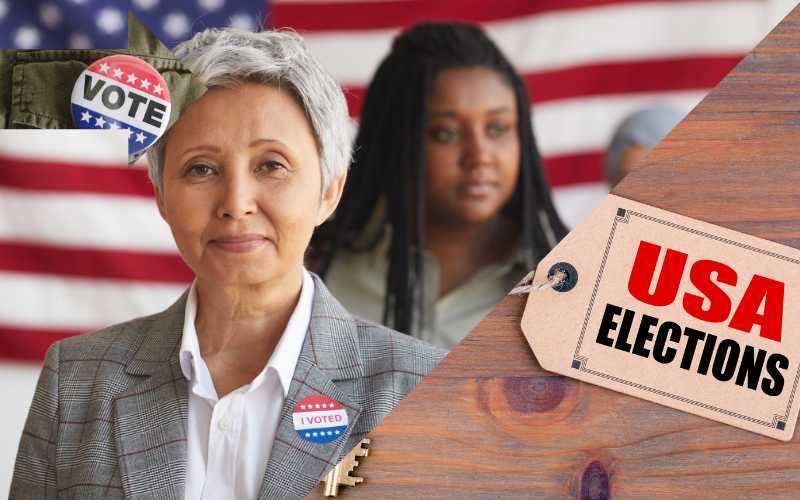US Presidential Election and the Electoral College
The U.S. presidential election is set for November 5, but there’s a twist: the candidate with the most votes might not win. This is because the president is chosen by the electoral college, not directly by the popular vote.
Understanding the Electoral College
In the November election, American voters will largely cast ballots for either Democrat Kamala Harris or Republican Donald Trump. However, the outcome is determined by the electoral college rather than a nationwide tally. The contest isn’t a single national race; it’s 50 separate state races.
When a candidate wins a state, they secure all of that state’s electoral college votes. There are 538 total electoral college votes, and a candidate must win a majority—270 or more—to secure the presidency. Their running mate then becomes the vice-president.
How the Electoral College Works
Each state has a set number of electoral votes, generally based on its population. California holds the most with 54, while states with smaller populations, such as Wyoming, Alaska, and North Dakota (plus Washington D.C.), have the minimum of three.
Most states award all of their electoral college votes to the candidate who wins the popular vote within that state. For instance, winning just 50.1% of the vote in Texas secures all of its 40 electoral votes. Winning by a large margin or a slim one garners the same number of electoral votes.
Is it Possible to Win the Popular Vote but Lose the Election?
Yes. A candidate can win the presidency by narrowly securing multiple states, even if they have fewer votes nationwide. In 2016, Donald Trump won despite receiving nearly three million fewer votes than Hillary Clinton. Similarly, in 2000, George W. Bush became president despite losing the popular vote to Al Gore by over half a million.
Only three other presidents have taken office without winning the popular vote, all of whom were elected in the 1800s.
The Term “Electoral College”
The term “college” refers to a group of electors who cast their states’ votes. The electoral college system is unique to the presidential election; other U.S. elections are determined by a direct popular vote.
What does the electoral college map look like?

Do Electors Have to Follow the State’s Vote?
In some states, electors can technically vote as they wish, regardless of the state’s choice. However, they nearly always vote for the candidate with the most state votes. If an elector votes differently, they are labeled “faithless.”
In 2016, seven electors voted contrary to their state’s selection, but the election outcome was unaffected. In some states, faithless electors face fines or legal consequences.
What Happens in the Case of a Tie?
If no candidate wins a majority of electoral votes, the House of Representatives selects the president. This has occurred only once, in 1824, when four candidates split the electoral vote without a majority winner. Given today’s dominance of the Republican and Democratic parties, such a situation is unlikely.
Why Was the Electoral College Created?
When the U.S. Constitution was written in 1787, a popular vote for president was impractical due to the country’s size and limited communication methods. So, the framers of the Constitution established the electoral college.
The system appealed to southern states, where non-voting enslaved people were counted in the population, enhancing southern states’ influence.
Pros and Cons of the Electoral College
Advantages:
• Keeps smaller states relevant to candidates
• Allows candidates to focus on key states rather than traveling nationwide
• Easier recounts, as officials can focus on a single state
Disadvantages:
• A candidate can lose the popular vote but still win the election
• Some voters feel their vote lacks impact
• “Swing states” hold excessive power
What Are Swing States?
Most states consistently vote for the same party, which is why presidential candidates target “swing states” where the outcome is uncertain. In 2024, critical battleground states include Arizona, Georgia, Michigan, Nevada, Pennsylvania, and Wisconsin.
Fake Electors
In 2020, the concept of “fake electors” emerged when pro-Trump Republicans in seven states tried to overturn the election results by appointing their own electors. Some signed official-looking documents or gathered at state capitals on December 14, the day electors cast their votes. Many involved have faced legal action, and investigations continue.
Stay informed on the race for the White House with North America correspondent Anthony Zurcher’s US Election Unspun newsletter.
Wassup!! Ultraman53 here… Vikram Singh Pratihar. I’m a seasoned blogger, writing publishing and marketing most viral content online and making bucks, big bucks. You may occasionally find boring instead of viral, and wonder if i’m really a VIRAL content creator, but that’s okay, there are a few bad apples here and there. I’m a great one…. – source of information ‘Trust me bro!’

